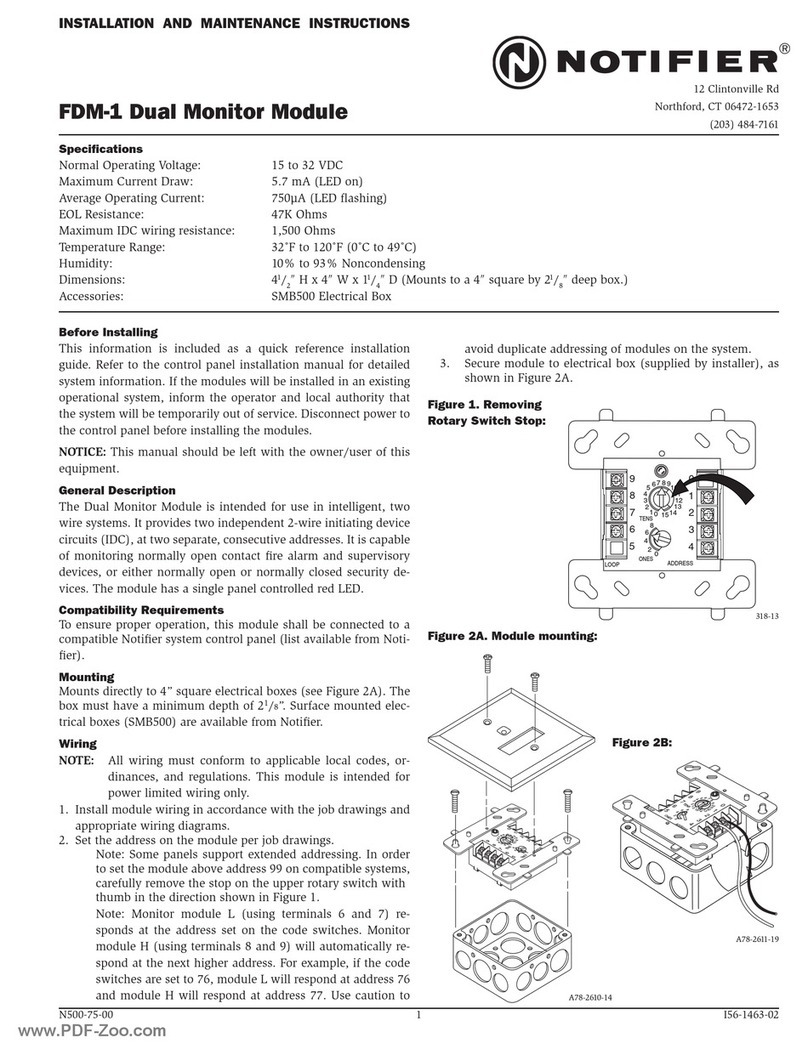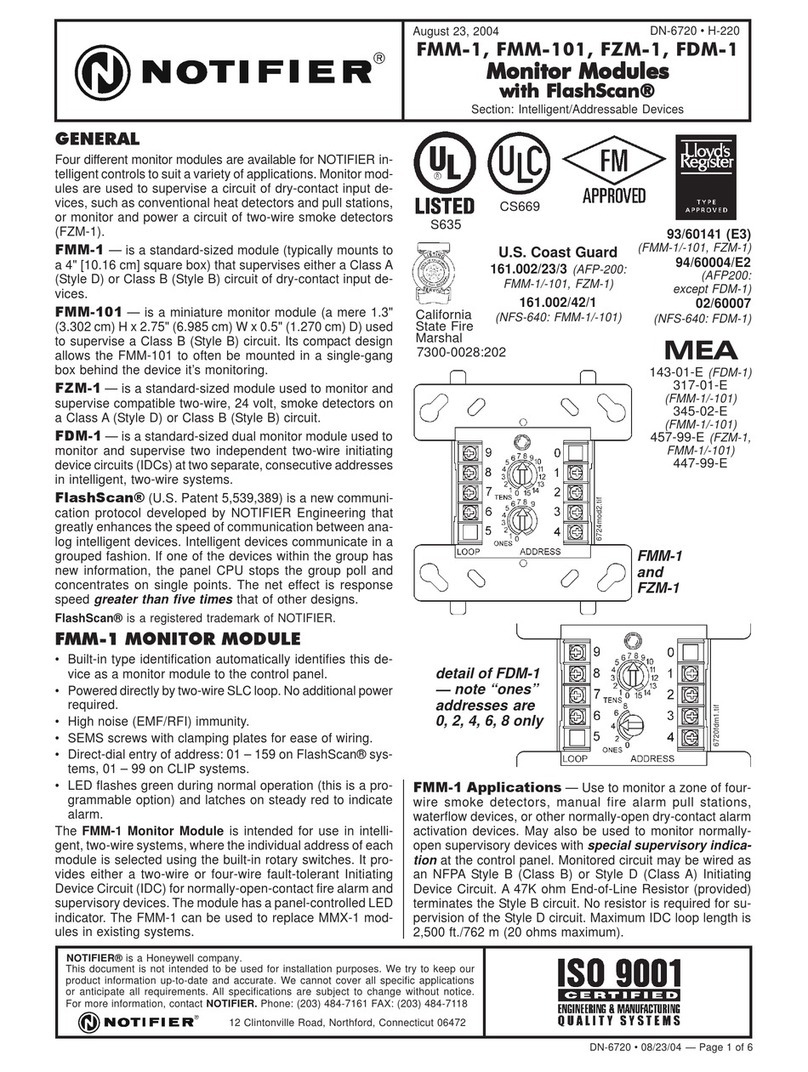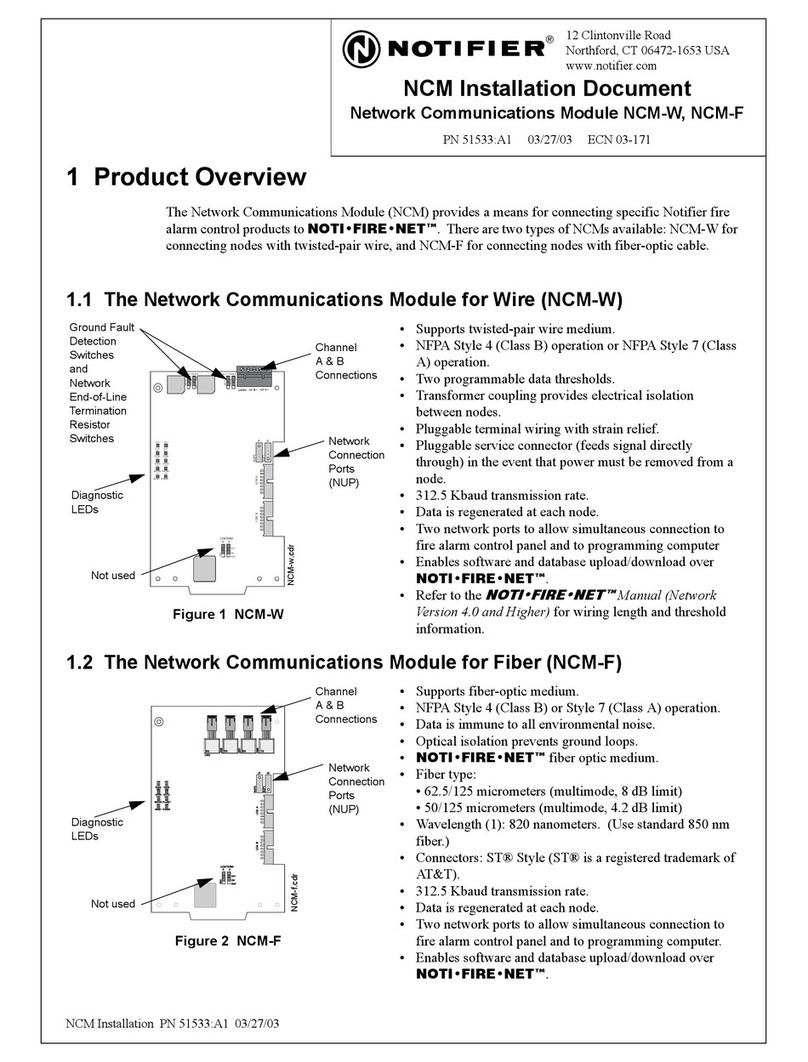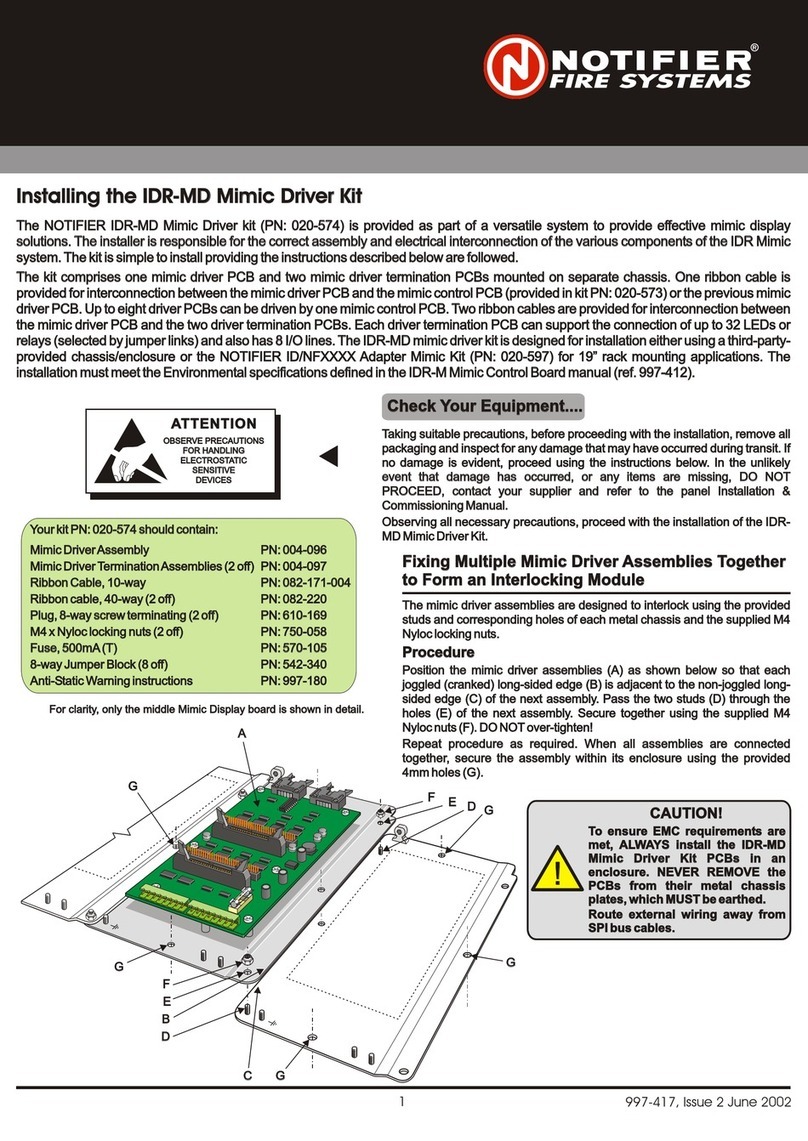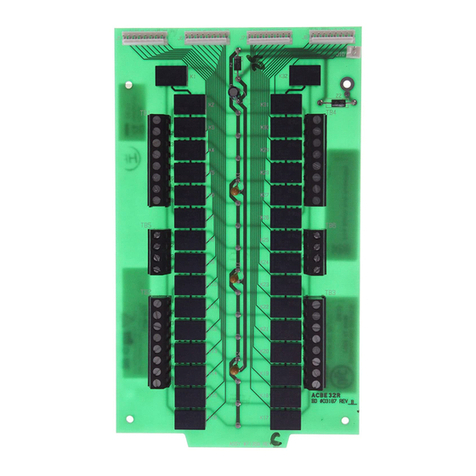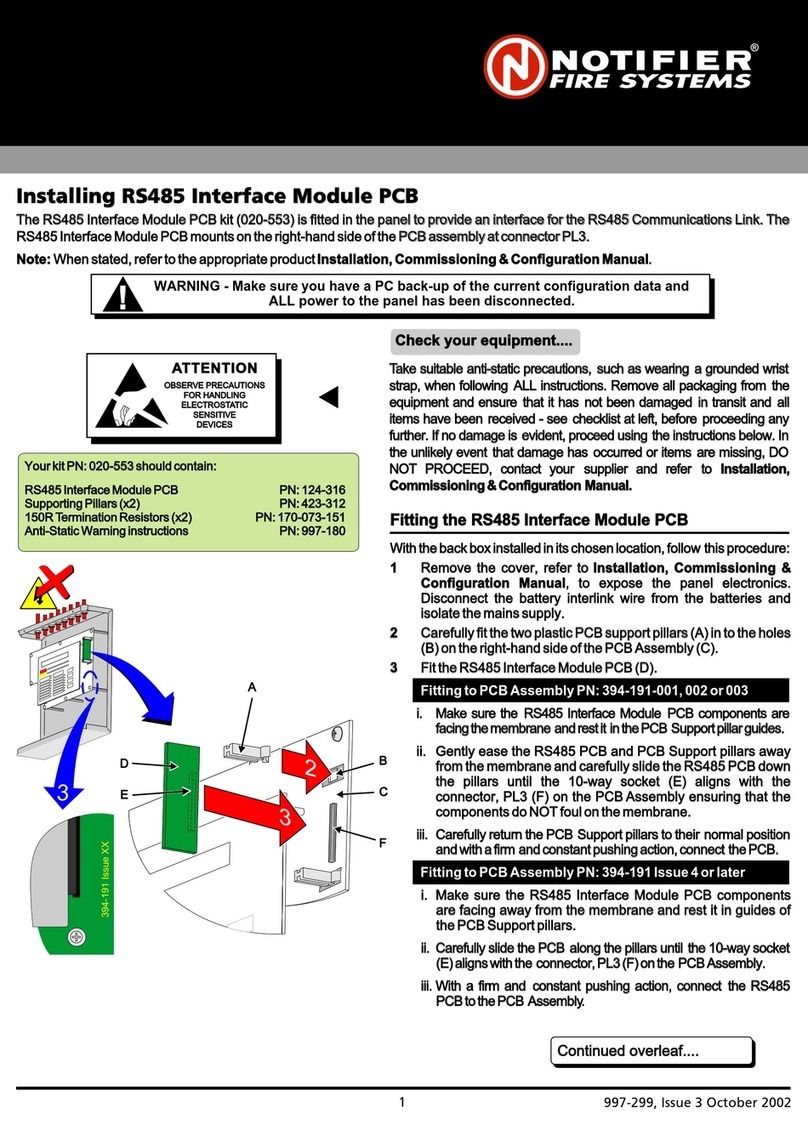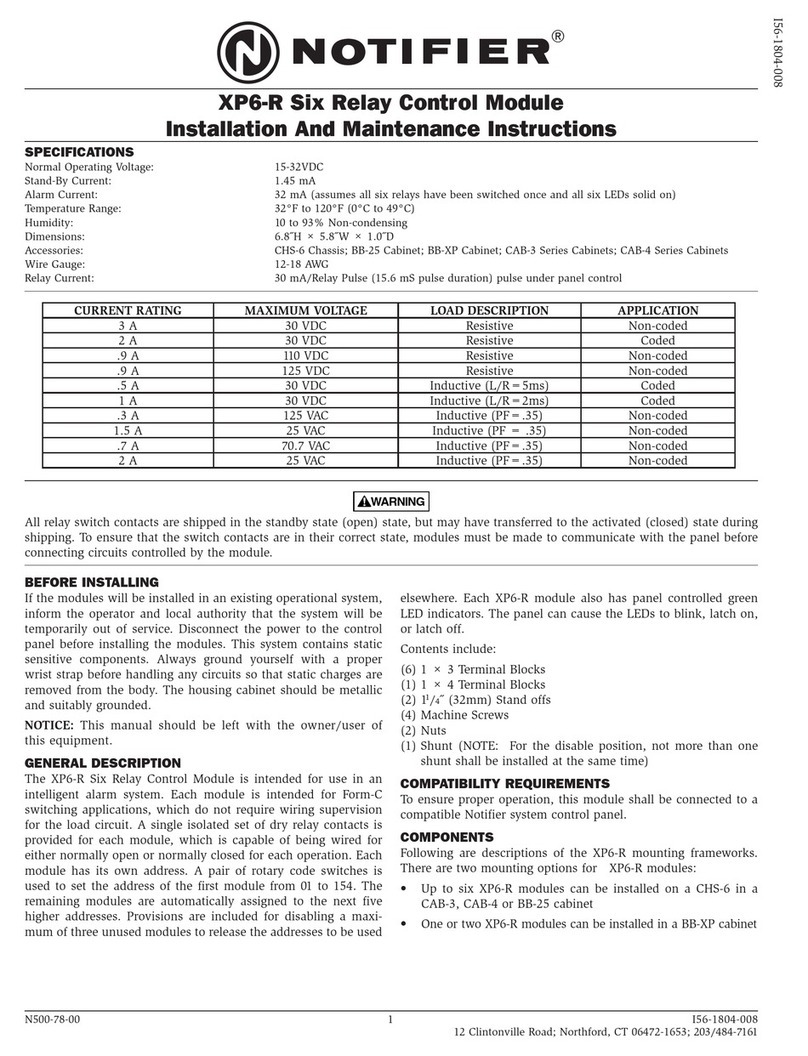
Figure. 7:
TENS
0
78
6
5
4
3
21
910
11
12
13
14
15
NOTE: Power must not be applied to the unit when changing
functionality of the shunts.
4. A shunt is provided to disable a maximum of two unused
modules in Class B operation and one unused module in Class
A operation. Modules are disabled from the highest address
and work downward. If two modules are disabled, the lowest
eight addresses will be functional, while the highest two will
be disabled. For example, in Class B operation, if the shunt for
Address Disable is placed on “two” and the base switch is set
to 28, the modules will be assigned to 28, 29, 30, 31, 32, 33,
34 and 35 while disabling the highest two positions.
5. A communications loss feature is available on some panels.
Upon a communication loss, due to a microprocessor failure at
the control unit, the XP10-M will send a signal to the control
unit to activate the notification device circuits upon initiating
of an alarm on the XP10-M. A single shunt is used to enable
(shunt on) or disable (shunt off) this feature for all modules
on the board.
NOTE: Place unused shunts on single pin to store on board for
future use.
WIRING NOTES
• Power-limited circuits must employ type FPL, FPLR, or FPLP
cable as required by Article 760 of the NEC.
PROGRAMMING
The XP10-M module operates with the following Fire Alarm
Control Panels:
• AM2020/AFP1010
• AFP-200
• AFP-300/AFP-400
• S-5000 with AIM-200
• AFC-600
• NFS-640
• NFS-3030
The modules are programmed as devices in each system according
to the programming instructions in the appropriate FACP manual.
N500-77-00 3 I56-1803-007
Figure 6b. Installation of XP10-M module in front
chassis position:
Step 1: Insert the bottom edge of the XP10-M module down into
a front slot of the chassis.
Step 2: Carefully swing the upper edge of the board towards the
back of the chassis until it touches the 1
1⁄4˝ (31.75mm)
standoffs installed on the rear module.
Step 3: Align two 4-40 screws with the two standoffs and tighten.
Step 4: Address and wire the modules according to the instruc-
tions in this manual.
WIRING
NOTE: All wiring must conform to applicable local codes, or-
dances, and regulations.
1. Install module wiring in accordance with the job drawings and
appropriate wiring diagrams.
2. All wiring to the XP10-M is done via terminal blocks. In order
to properly make electrical connections strip approximately 1⁄4˝
of insulation from the end of wire, sliding the bare end of the
wire under the clamping plate screw.
3. Set the address on the modules per the job drawing. Use the
rotary code switches to set the address of the first module
(between 01 and 150).
In Class B operation, the remaining modules are automati-
cally assigned to the next nine higher addresses. For exam-
ple, if the base address switch is set to 28, the next nine modules
will be addressed to 29, 30, 31, 32, 33, 34, 35, 36, and 37.
The module is shipped in Class B position, remove shunt for
Class A. When operating in Class A, alternate modules are paired
together (+0/+1, +2/+3, +4/+5, +6/+7, +8/+9), resulting
in a total of five modules. For example, if the base address switch
is set to 28, then 30, 32, 34 and 36 will be automatically assigned
to the modules while 29, 31, 33, 35 and 37 are available to be
used for other modules on the SLC. For Class A and B operation,
DO NOT set the lowest address above 150, as the other modules
will be assigned to nonexistent addresses.
NOTE: The XP10-M must have power cycled for shunt changes
to take effect.
NOTE: Some panels support extended addressing. In order to
set the module above address 99 on compatible systems,
carefully remove the stop on the upper rotary switch (see
Figure 7). If the panel does not support extended address-
ing, do not set the lowest address above 90.
FCC Statement
This device complies with part 15 of the FCC Rules. Operation is subject to the following two conditions: (1) This device may not cause harmful interference, and (2) this
device must accept any interference received, including interference that may cause undesired operation.
NOTE: This equipment has been tested and found to comply with the limits for a Class B digital device, pursuant to Part 15 of the FCC Rules. These limits are designed to
provide reasonable protection against harmful interference in a residential installation. This equipment generates, uses and can radiate radio frequency energy and, if not
installed and used in accordance with the instructions, may cause harmful interference to radio communications. However, there is no guarantee that interference will not
occur in a particular installation. If this equipment does cause harmful interference to radio or television reception, which can be determined by turning the equipment off
and on, the user is encouraged to try to correct the interference by one or more of the following measures:
– Reorient or relocate the receiving antenna.
– Increase the separation between the equipment and receiver.
– Connect the equipment into an outlet on a circuit different from that to which the receiver is connected.
– Consult the dealer or an experienced radio/TV technician for help.
C0226-00
C0227-00
